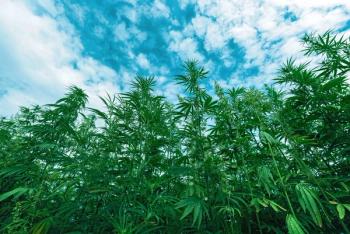
Cannabis Unearthed: Forensic Analysis Reveals Cannabis in 17th Century Human Bones
Researchers analyzed several bone samples from a hospital crypt and detected two cannabinoids.
In a report published earlier this year in the Journal of Archaeological Science, researchers from the University of Milan and the Foundation IRCCS Ca’ Granda Ospedale Maggiore Policlinico di Milano discovered cannabis in bones samples from 17th century (1). The remains came from the Ca’ Granda crypt for the Ospedale Maggiore in Milan, Italy; the crypt was a place of burial for hospital patients from 1638 to 1697 (1).
Samples from nine femurs were taken, tested, and two of the samples—one from a female estimated to be 45–54 years old, and one from a male estimated to be 16–20 years old—contained both delta-9-tetrahydrocannabinol and cannabidiol (CBD) (1). "This is an important finding, because there are very few laboratories that can examine bones to find traces of drugs," stated Gaia Giordano, with the Department of Biomedical Science for Health at the University of Milan (1,2). She also explained that methods of cannabis consumption were probably in cakes and infusions (2). The timeframe of cannabis exposure for these samples was suggested to be anywhere between a short amount of time and years up until the death of the patient (1).
The purpose of the investigation was to detect recreational or medicinal plants administered to patients in the hospital (1). However, according to the hospital’s pharmacopeia, cannabis was not found to be one of the substances administered to patients during this time period (1). Researchers hypothesized several alternative methods of cannabis exposure including that cannabis was used recreationally, by the patients self-medicating, or by doctors unaffiliated with the hospital (1).
“These results, to the best of our knowledge, constitute the first report on the detection of cannabis in historical and archaeological human osteological remains,” stated the researchers in the Discussion section (1). “Indeed, according to the literature, this plant has never been detected in ancient bone samples.” Additionally, the researchers stated these findings are the first evidence of cannabis use in Europe in the Modern Age, explaining that its use was common during Greek and Roman times, but decreased after the 12th century (1).
Future studies on the remains in the crypt will investigate the frequency of cannabis use (2).
References
- Giordano, G.; Mattia, M.; Boracchi, M.; Biehler‐Gomez, L.; Cummaudo, M.; Porro, A.; Caccianiga, M.; Sardanelli, F.; Slavazzi, F.; Galimberti, P. M.; et al. Forensic toxicological analyses reveal the use of cannabis in Milano (Italy) in the 1600’s. Journal of Archaeological Science 2023, 160 DOI: 10.1016/j.jas.2023.105873.
- Williams, M. Traces of cannabis in human bones suggest 17th-century Italians were recreational pot users | CBC News
https://www.cbc.ca/news/science/cannabis-bones-milan-italy-1.7020809
Newsletter
Unlock the latest breakthroughs in cannabis science—subscribe now to get expert insights, research, and industry updates delivered to your inbox.





